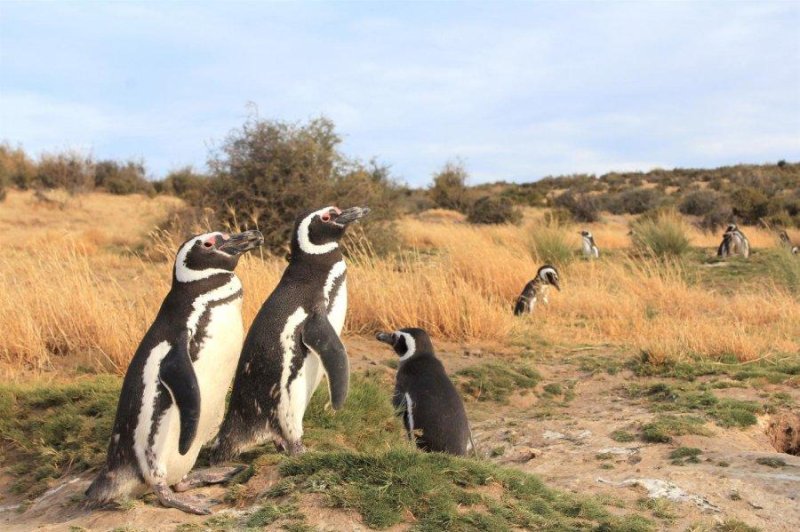A pair of Magellanic penguins. Photo by Takashi Yamamoto
Jan. 7 (UPI) -- Each year, thousands of Magellanic penguins are stranded on the South American coast, far from their breeding grounds in Antarctica. According to new research, a majority of the stranded penguins are female.
Female penguins, scientists found, are more likely to wander farther north, increasing their likelihood of becoming stranded. Researchers published their findings this week in the journal Current Biology.
The farther north penguins travel, the more likely they are to run into threats posed by humans. Threats found on the coasts of northern Argentina, Uruguay and southern Brazil include water pollution and other hazards related to oil production and marine transport.
"Our results suggest that the northward spatial expansion likely increases the probability to suffer these risks, and particularly so in females," Takashi Yamamoto, researcher at the Institute of Statistical Mathematics in Tokyo, said in a news release.
The new research was aided by fresh tracking data that showed for the first time that, contrary to what scientists thought, males and females split up during the winter. The tracking data showed females tended to roam farther north during the non-breeding season. The geotracking devices also showed females don't dive as deep underwater as males.
Though researchers aren't certain, they suspect the male-female behavioral differences observed during winter are related to the competition for resources. Males are larger and heavier than females, requiring more food to sustain them through the non-breeding season.
According to Yamamoto, the revelations offered by the latest tracking data offer a reminder of how little scientists know about penguin behavior outside of breeding season.
"[The research highlights] the necessity of gaining a better understanding of the long-term spatial utilizations of species throughout their annual cycle, including any differences within a population, in order to facilitate dynamic and adaptive conservation practices," he said.
In future studies, Yamamoto and his colleagues hope to track juveniles from the time of their birth, when they leave the breeding grounds for the first time, to the time of their first mating season.
"Information during this period is totally missing," Yamamoto said.















